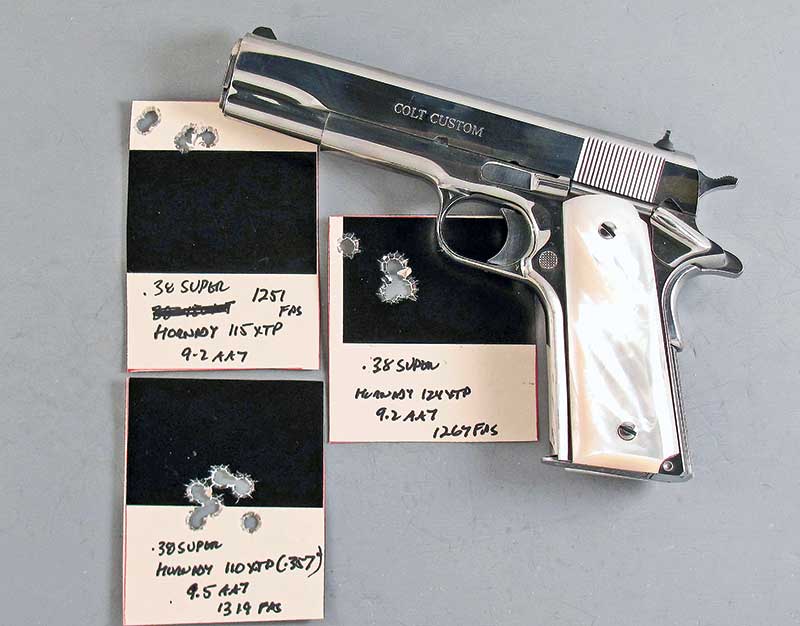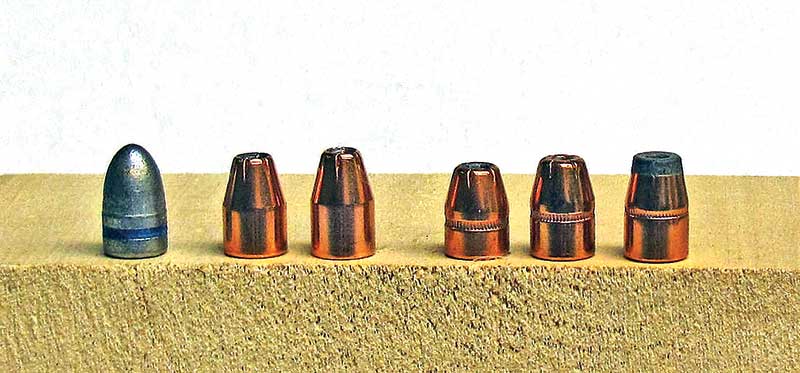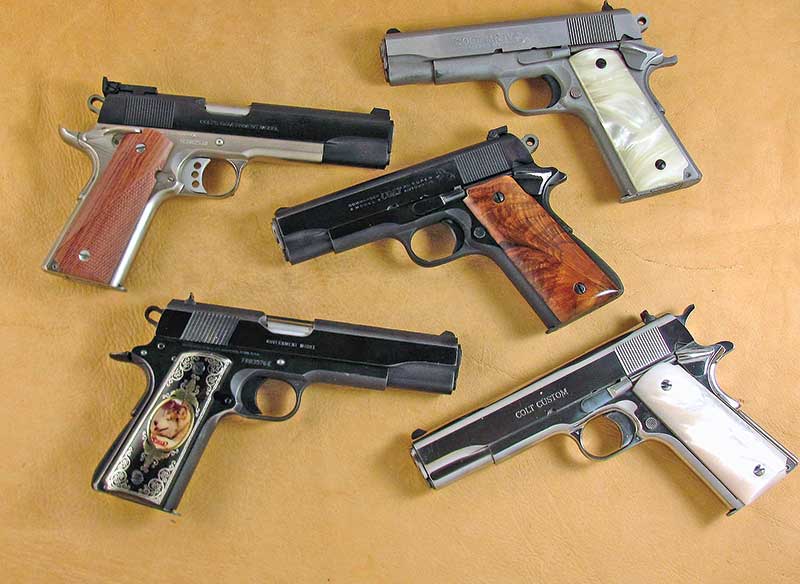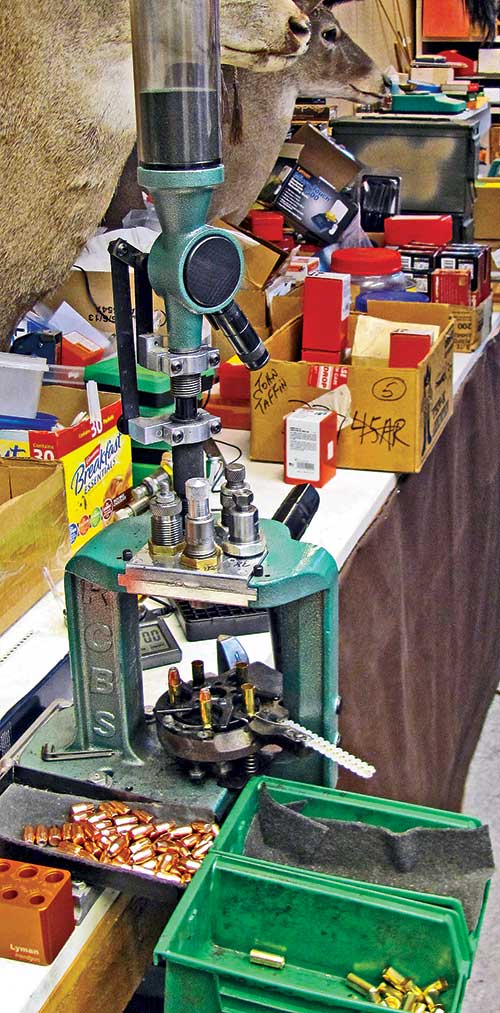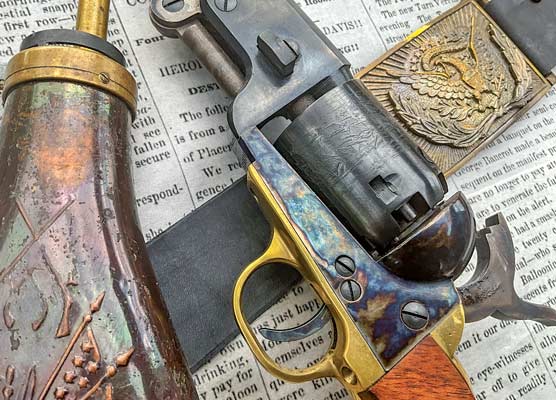Loading The .38 Super
Accurate Powerful & Versatile
My first .38 Super came about as a result of the Gun Control Act of 1968 (GCA 68). When this was passed we did not know exactly what effect it would have on firearms availability. At the time all of the major grocery stores, drug stores and department stores in my area had gun departments. With the passing of the bill I immediately went to the closest store and bought the three semi-auto pistols they had. They were all Colt Commanders and chambered in .45 ACP, 9mm and .38 Super. The latter proved to be a real disappointment as it would not stay on a piece of notebook paper at 25 yards.
The reason was the .38 Super headspaced on the very small rim instead of the mouth of the cartridge, as did the other two semi-autos. I sent it to Bill Wilson who installed one of his barrels properly headspaced and the groups immediately shrunk to 2″ — and then proceeded to get better.
In his 1930 book, Shooting, Fitz (John Henry Fitzgerald) of Colt said it was equal in accuracy to the .45 ACP 1911 and superior at longer ranges. So obviously something went wrong over the following decades. All current .38 Supers are now properly headspaced on the mouth of the cartridge so accuracy is no longer a problem.
The original bullet weight was 130 grains and full metal jacketed loads can still be found at this weight, however most jacketed hollow points or soft points weigh 124 and 125 grains today. I have yet to see a box of bullets marked “.38 Super,” however “most” 9mm bullets will work. The proper bullet diameter for the .38 Super is .356″ while the 9mm bullets are normally .355″. That is not much difference however it does seem to make a difference to some .38 Super barrels.
The only answer is experimenting with each individual .38 Super. Some .357 Magnum jacketed bullets which normally measured .357″ will also work in the .38 Super. Again it’s a matter of experimenting to see what works and shopping around with various bullets and weights will likely find you a jewel.
The Standards
For standard weight bulleted loads we will consider anything at 130 grains or less. For me, with today’s selection, it means jacketed bullets in the 110- to 125-grain range, and 125-grain hard cast bullets. When I acquired my first .38 Super and then had it properly re-barreled by Bill Wilson, the powder of choice was Unique. At the time Speer offered a 125-grain soft point .38 Super bullet which I loaded to 1,300+ fps using 6.7 grains of Unique. This load, and all loads mentioned, should be used with caution and beginning loads should be reduced by a minimum of 10 percent. Most of my loads today are assembled using Accurate Arms #7, which I think is now distributed by Western Powders as Accurate No. 7. I also still use Unique as well as Universal, Power Pistol and HS6, however the bulk of my loading is done with #7.
My most-used bullets are Hornady’s 115 and 124 XTP’s. Loaded over 9.2 grains of #7, the 115-grain XTP does 1,264 fps from a 5″ 1911 while the 124-grain bullet clocks out at 1,208 fps. These two loads group five shots at 20 yards in 11/8″ and 7/8″ respectively from a Kimber Stainless Steel Target II.
In the Wilson Custom 1911 the results are the same. My original Commander also has a preference for these two loads with muzzle velocities right at 1,200 fps and groups in the 11/4″ range. My second oldest .38 Super is a Springfield Armory Mil-Spec. This excellent shooting 1911 also groups both of these loads under 1″.
.357 Bullets
I also use .357 Magnum bullets, which are normally .357″ in diameter, very successfully in the .38 Super. With the Hornady 110 XTP JHP and 125 XTP JHP my loads of choice are 9.5 grains of #7 with the former and 9.0 grains of #7 with the latter. In the Kimber these two loads clock out at 1,302 fps and 1,226 fps respectively and group 1″ and 5/8″ also respectively. Switching to the Wilson Custom 1911 the muzzle velocities are 1,293 fps and 1,206 fps, also respectively while grouping 3/4″ and 11/4″. These two loads also shoot superbly in the Colt Custom Government Model, yielding velocities of 1,319 fps and 1,267 fps respectively with groups of 7/8″ and 1″. With the Commander, muzzle velocities are right at 1,260 fps also grouping right at the 11/4″ mark.
These are high performance loads, not in the least lacking in accuracy. However, I want to remind you to start your own loading with at least a 10 percent reduction while you ease up to stouter loads.
My standard weight cast bullet of choice in the .38 Super is the Oregon Trail 125-grain round-nosed bullet. My utility load is assembled with 8.7 grains of #7 with a muzzle velocity of 1,100 fps and 1″ groups from the Kimber Target II. Shooting cast bullets in the .38 Super is not a given though. They can provide tight groups — or look like shotgun patterns — depending upon the individual .38 Super so you may need to experiment.
Down the road we’ll take a look at heavier bullets in the .38 Super. I think the .38 Super remains an under-appreciated cartridge and deserves serious consideration if you’re for high performance, lower recoil and sterling accuracy. What more could you want?


